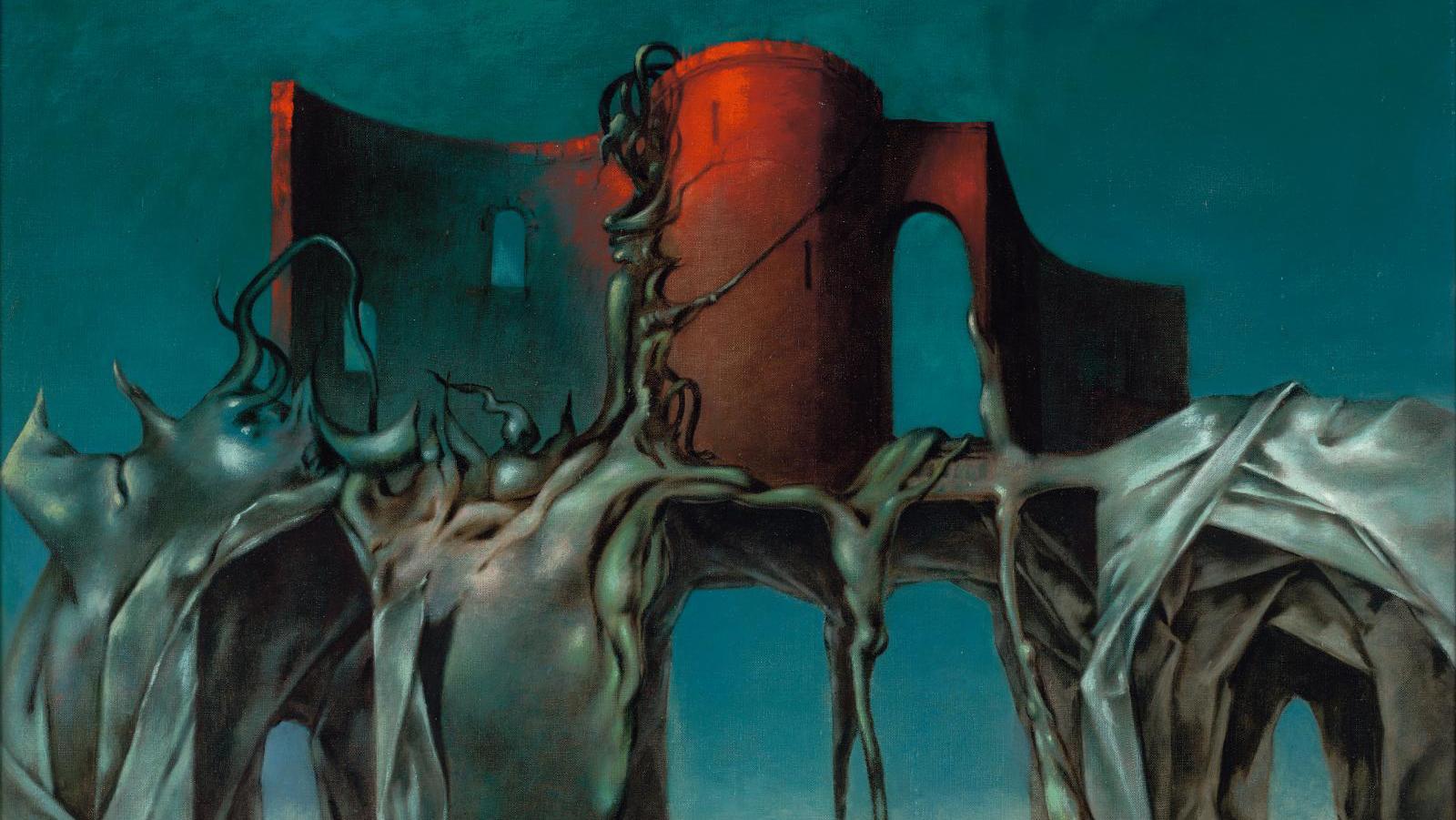With the approach of the Second World War, Surrealism moved across borders. In the UK and the US, women artists delved into esotericism, botany, medicine, cinema, naive art—in fact, everything was grist to their mill.
Dorothea Tanning (1910-2012), The Witch, 1950, oil on canvas, 46 x 61 cm/18.1 x 24 in.
Courtesy of Gallery Wendi Norris, San Francisco
In the 1930s, Surrealism crossed the Channel, winning over writers, critics and artists alike. While a new war seemed increasingly inevitable, more distant journeys tinged with esotericism and oriental philosophies took place. For instance, Valentine Penrose (1898-1978) left England and Europe to live in an ashram in India. Her poems, short stories and collages were then promoted by Paul Éluard , whom she had met in Paris. The British artist Grace Pailthorpe (1883-1971) turned to science in her search for fresh inspiration. Medical imaging and the psychiatric world, already present in Surrealism during the 1920s, played a specific role in her artistic output. After studying music in London, she branched out into medicine and became a surgeon during the Great War. This was followed by a long journey around the world, studies on psychoanalysis and criminal psychology, and finally involvement with British health institutions. Her visual art, which she began…
com.dsi.gazette.Article : 24777
This article is for subscribers only
You still have 85% left to read.
